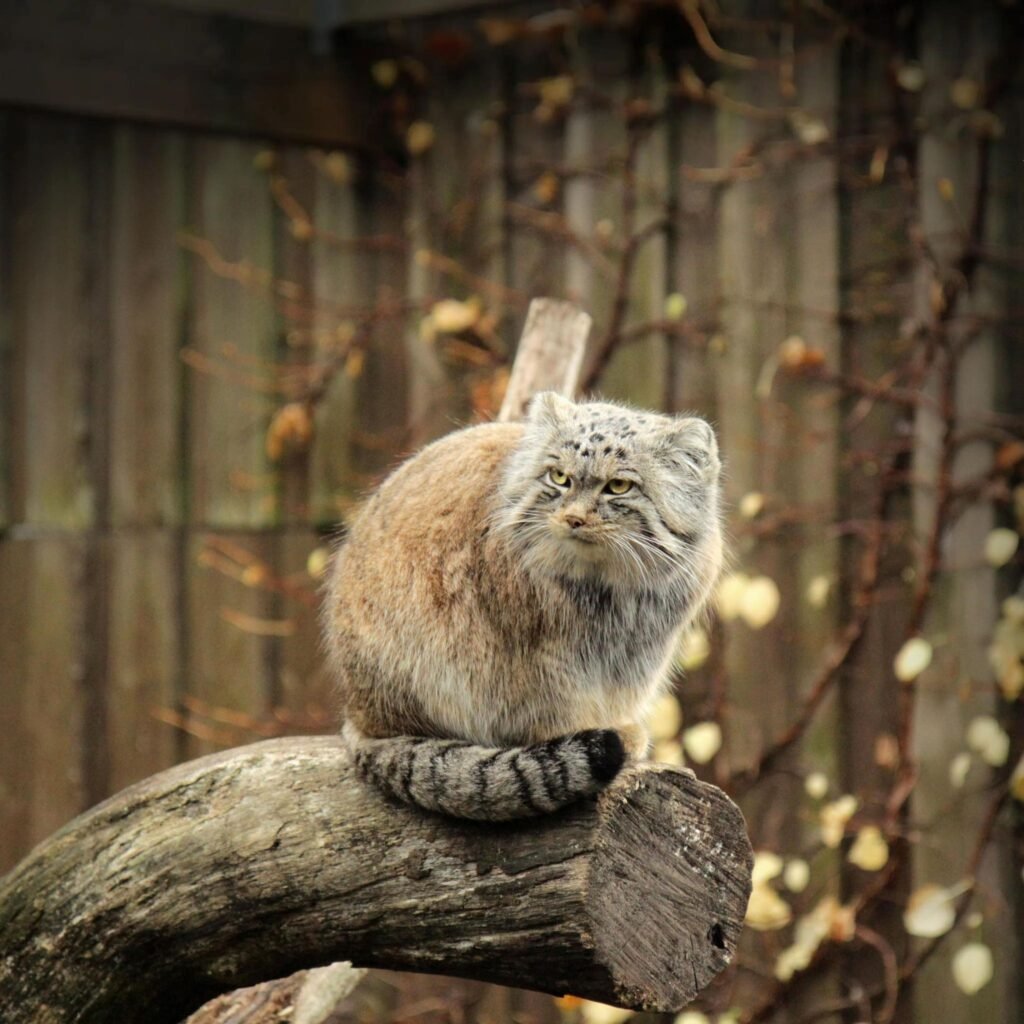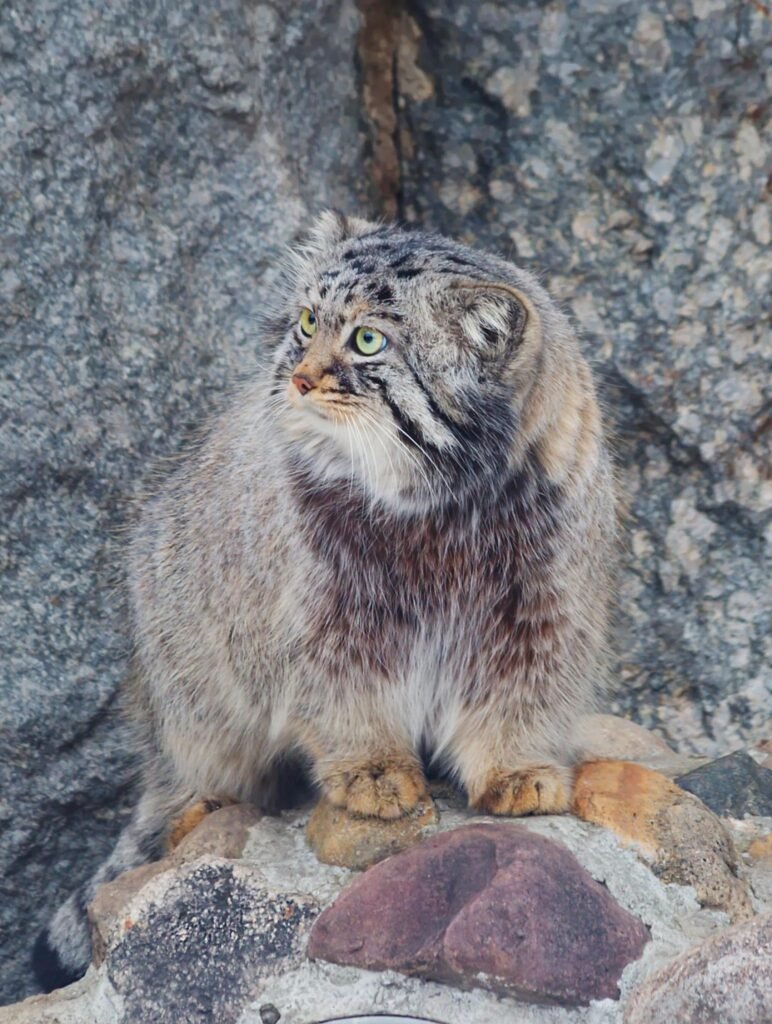
The Pallas’s cat, Otocolobus manul, also known as the manul, is a small wild cat characterized by its stocky build, long, dense fur that makes it appear larger than it is, and a distinctive flattened face with wide-set, low-set ears and round pupils. Native to the harsh, cold steppes and mountains of Central Asia, its coat color ranges from grey to reddish-brown, often with subtle stripes, providing excellent camouflage in its rocky, arid habitats. This solitary and largely crepuscular (active at dawn and dusk) hunter is highly adapted to its extreme environment, with thick fur for insulation and a relatively flat head that helps it peek over terrain while hunting. Pallas’s cats primarily prey on pikas, voles, and other small rodents, along with birds and insects, often ambushing them near burrows.

Pallas’s cats are important members of their grassland and mountain ecosystems, playing a key role in controlling rodent and pika populations. By preying on these small herbivores, they help prevent overpopulation, which can lead to overgrazing and degradation of the fragile steppe vegetation. Their presence is an indicator of a healthy and balanced prey base and a functioning high-altitude ecosystem. Despite their wide distribution, Pallas’s cats face threats from habitat loss due to agriculture and infrastructure development, as well as prey decline from poisoning campaigns targeting rodents. Therefore, conservation efforts focused on the Pallas’s cat are crucial not only for the survival of this unique and charismatic feline but also for the preservation of the delicate balance within the vast and often overlooked Central Asian steppes.
Every day, wild cats around the world face threats like habitat loss, poaching, and natural climate progression. But hope isn’t lost. With your support, we can protect these majestic animals and preserve their habitats.
Join our growing community of wildlife champions and help create a safer future for all 40 wild cat species.
Zoo-EV is a nonprofit organization dedicated to the protection and preservation of the world’s 40 wild cat species through education, community engagement, and conservation initiatives. Zoo-EV is recognized as a 501(c)(3) tax-exempt organization by the IRS, with the Employer Identification Number (EIN) 88-3636567.